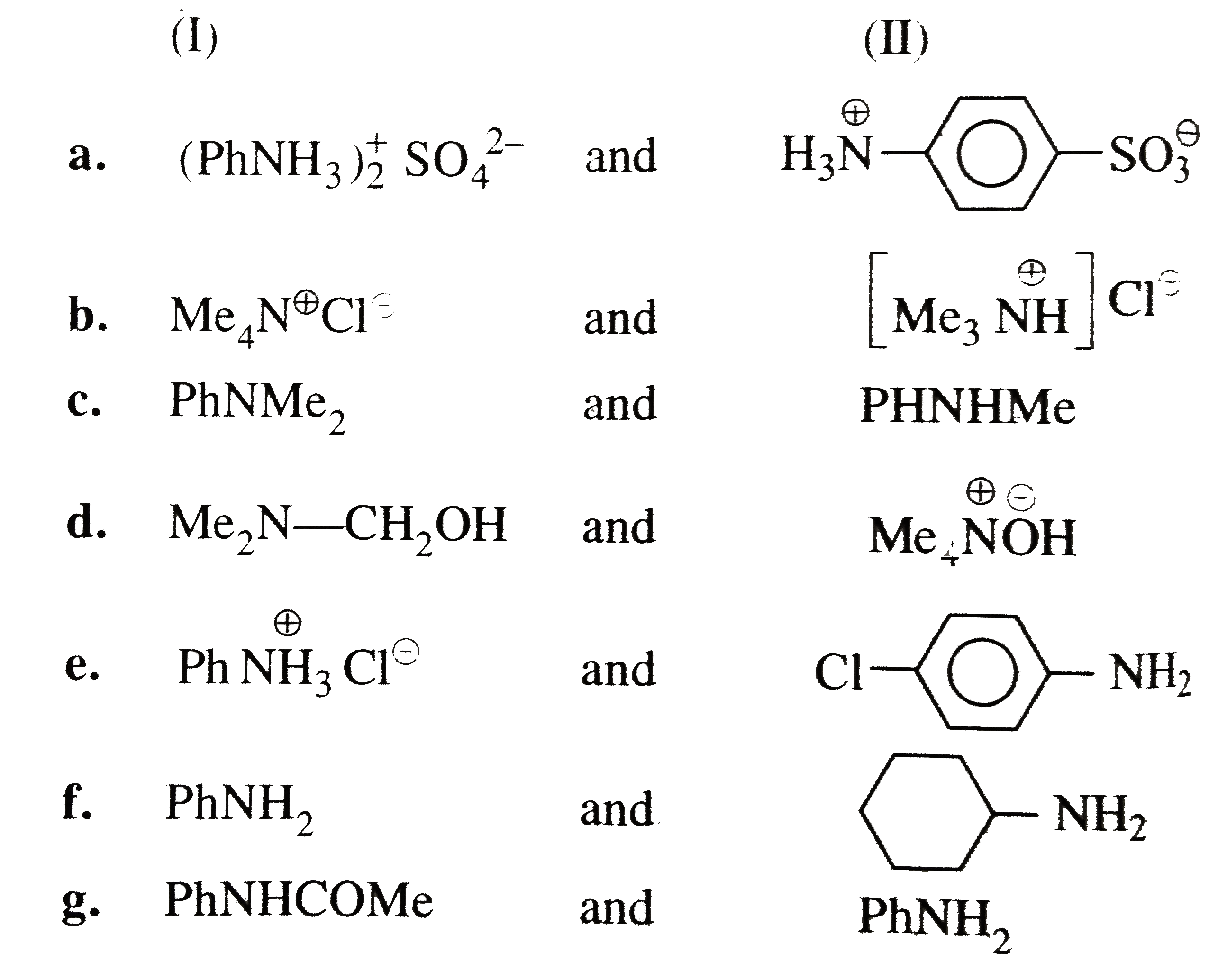How many of the following groups can only withdraw a pair of electrons in resonance depending upon situation

e) −⊕NMe3 f) −CONH2Solution in Telugu
The correct Answer is:1
Step by step video & image solution for How many of the following groups can only withdraw a pair of electrons in resonance depending upon situation e) -overset(oplus)(N)Me_(3)" f) "-CONH_(2) by Chemistry experts to help you in doubts & scoring excellent marks in Class 11 exams.
Topper's Solved these Questions
- BOOK - AAKASH SERIESCHAPTER - ELECTRONIC EFFECTS AND REACTION INTERMEDIATESEXERCISE - LECTURE SHEET ( EXERCISE-I (LEVEL-I (MAIN)) (Sraight Objective Type Questions)15videos
ELECTRONIC EFFECTS AND REACTION INTERMEDIATES
- BOOK - AAKASH SERIESCHAPTER - ELECTRONIC EFFECTS AND REACTION INTERMEDIATESEXERCISE - LECTURE SHEET ( EXERCISE-I (LEVEL-II (ADVANCED)) (Sraight Objective Type Questions)8videos
ELECTRONIC EFFECTS AND REACTION INTERMEDIATES
- BOOK - AAKASH SERIESCHAPTER - ELECTRONIC EFFECTS AND REACTION INTERMEDIATESEXERCISE - ADDITIONAL PRACTICE EXERCISE (Practive Sheet (ADVANCED) Linked Comprehension Type Questions)3videos
ELECTRONIC EFFECTS AND REACTION INTERMEDIATES
- BOOK - AAKASH SERIESCHAPTER - ELECTRON MIGRATION EFFECTS EXERCISE - QUESTIONS FOR DESCRIPTIVE ANSWERS10videos
ELECTRON MIGRATION EFFECTS
- BOOK - AAKASH SERIESCHAPTER - ELEMENTS OF BORON FAMILYEXERCISE - OBJECTIVE EXERCISE - 37videos
ELEMENTS OF BORON FAMILY
Similar Questions
+I effect (inductive effect) is shown by
03:53View SolutionPolarization of electrons in acrolein may be written as
View SolutionResonance phenomenon is generally involved when single valence bond structure could not represent the actual structure of the molecules or species. Based on the actual bond lengths, bond energies etc, of the molecules or species, resonance phenomenon will help to achieve at the correct structure of the species or molecules.
Which of the following is the correct resonance structure of
 View Solution
View SolutionHyperconjugation effect is also termed as 'no bond resonance'. Why?
05:12View SolutionWhich one of the following compounds is not a protonic acid ?
02:55View SolutionThe correct order of stabilities of the following resonance structures is :
(I) H2C=⊕N=ӨN
(II) H2⊕C−N=ӨN
(III) H2ӨC−⊕N≡N
(IV) H2ӨC−N=⊕N.03:09View SolutionDistinguish between the following pairs:
((I),,.(II)),(a.(PhNH3)+2SO2−4,and, ,(b.Me4N⊕CIΘ,and,[Me3⊕NH]CIΘ),(c.PhNMe2,and,PHNHMe),(d.Me2N−CH2OH,and,Me4⊕NΘOH),(e.Ph⊕NH3CIΘ,and,(f.PhNH2,and,(g.PhNHCOMe,and,PhNH2):} 04:02View Solution
,(b.Me4N⊕CIΘ,and,[Me3⊕NH]CIΘ),(c.PhNMe2,and,PHNHMe),(d.Me2N−CH2OH,and,Me4⊕NΘOH),(e.Ph⊕NH3CIΘ,and,(f.PhNH2,and,(g.PhNHCOMe,and,PhNH2):} 04:02View SolutionConjugation of electron withdrawing groups, e.g., -CHO , -overset(O)overset("|")C-R", "-overset(O)overset(||)C-OR", "-C-=N", "-NO_(2) activates nucleophilic addition. The order of reactivity of these groups is:
View SolutionConsider the following statements (a) CH_(3)O overset(oplus)CH_(2), CH_(3)overset(oplus)CH_(2) Is more permanent than (b) Me_(2) overset(oplus)CH, CH_(3)CH_(2)overset(oplus)CH_(2) Is more permanent (c) CH_(2)=CH-overset(oplus)CH_(2), CH_(3)CH_(2)overset(oplus)CH_(2) Is more permanent than (d) CH_(2)=overset(oplus)CH, CH_(3)overset(oplus)CH_(2) Is more permanent than Among these statements:
01:34View SolutionIdentify electron - withdrawing groups in resonance among the following :
02:18View SolutionWhich of the following groups can neither donate a pair of electrons in resonance
View SolutionFind the number of correct statement(s):
a) CH3O⊕CH2 is more stable than CH3⊕CH2
b) Me2⊕CH is more stable than CH3CH2⊕CH2
c) CH2=CH−⊕CH2 is more stable than CH3CH2⊕CH2
d) CH2=⊕CH is more stable than CH3⊕CH202:55View SolutionThe correct stability order of the following resonance structure is :
I) H2C=⊕N=өN II) H2⊕C−N=өN III) H2⊕C−N=өN IV) H2өC−N=⊕N03:09View SolutionFind the number of electron - donating groups in resonance among the following :
a) −CONH2b) −NO2c) −OCOCH3d) −COOCH3e) −CHOf) −NHCOCH304:02View SolutionIdentify the most permanent species from the following set of ions. (i) overset(oplus)CH_(3), overset(oplus)CH_(3)Br, overset(oplus)CHBr_(2), overset(oplus)CBr_(3) (ii) overset(oplus)CH_(3), overset(oplus)CH_(2)Cl, overset(oplus)CHCl_(2), overset(oplus)C Cl_(2)
01:59View Solution

